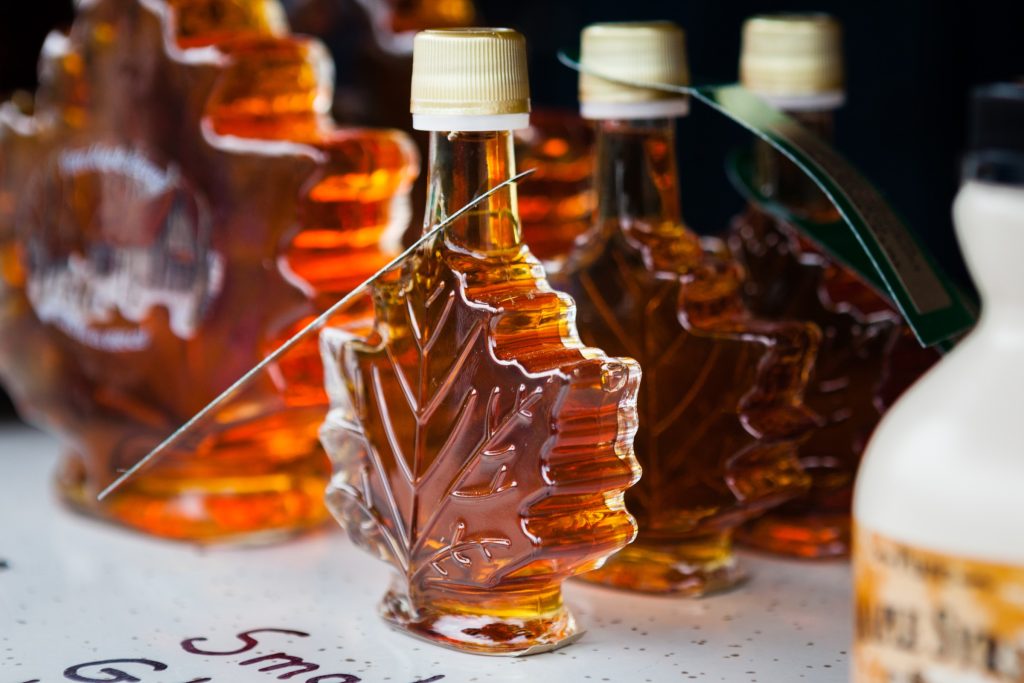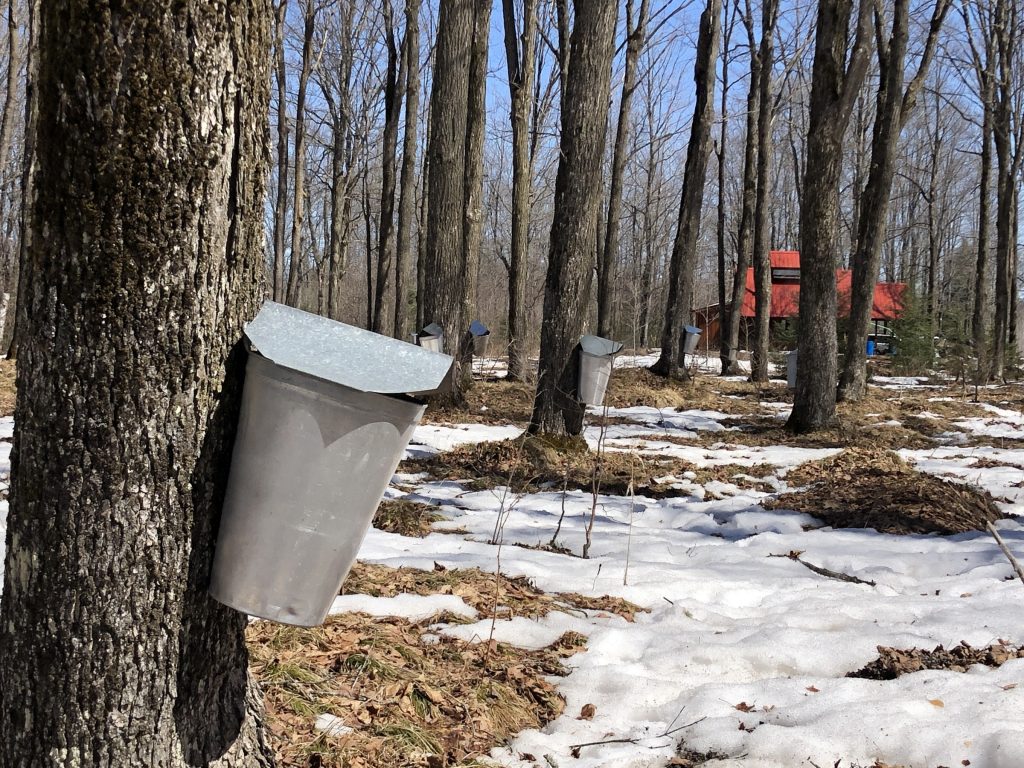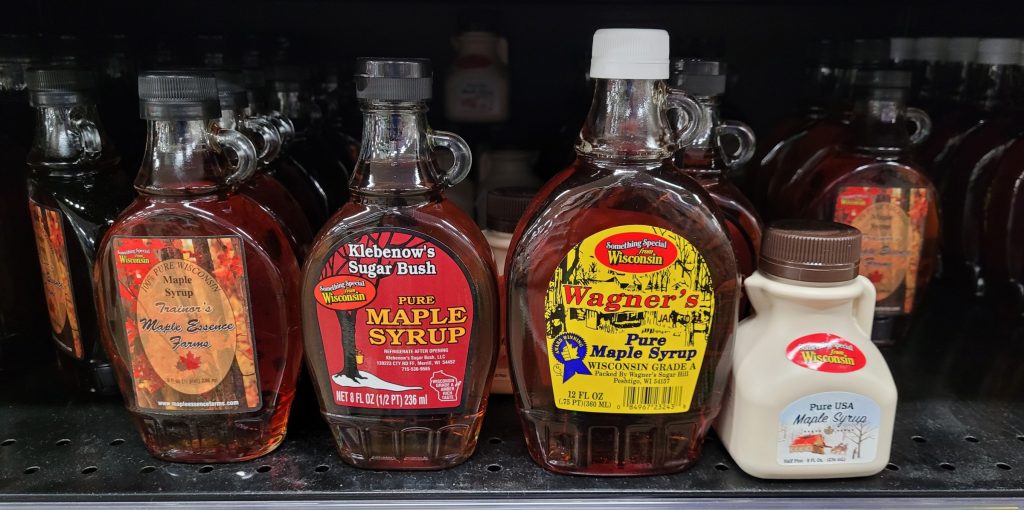Maple syrup has been produced for hundreds of years and is a unique cultural and place-based product that brings sweetness to people all over North America. Fortunately for you, it is also easy to begin producing and brings many rewards.
If you are interested in producing maple syrup products, the Maple Syrup Program through UW–Madison Division of Extension’s Natural Resources Institute is prepared to help you through the process.

The Maple Syrup Program provides education, resources, and guidance to woodland owners, farmers, and Tribal communities so they can access all the economic, recreational, and cultural elements of maple syrup. It is a three-year grant project funded by the USDA’s Acer Access and Development grant.
The maple syrup season runs from late winter to early spring, so now is a good time to begin preparing for the sugaring process. And as it turns out, there are quite a few considerations to make before you are ready to collect sap and make syrup.
What can you do now to prepare for the sugaring season?
Tony Johnson is the Maple Syrup Project Manager, a Forestry Outreach Specialist, and a small-scale maple syrup producer. He says the first step is assessing your forest.
“The first piece is going to be identifying maple trees in the woods and making sure that you’re tapping … the trees that you want to, whether that’s sugar maple, red maple, silver maple, or walnut.”
Johnson recommends identifying trees in the summer and fall because it can be harder to identify trees after they lose their leaves.
You’ll have to think about other environmental considerations as well. The tapping season occurs in the late winter, which requires trekking into frozen or thawing hardwood forests to access trees and buckets of sap.
Johnson recommends assessing the accessibility of your trails and trees before tapping season to ensure your ease and safety during the season. Hauling sap through trails, especially trails in adverse weather conditions, can be physically demanding as well, so it is important to consider the physical exertion required for sugaring.
Another important resource to use is foresters. Johnson recommends meeting with a Department of Natural Resources (DNR) forester who can assess the health of your trees, offer practices to maintain your woodlands for decades, and help manage other goals you have for your property.

“We generally point people to the DNR’s Forestry Assistance Locator because every county in Wisconsin has a DNR service forester who can provide free advice to woodland owners as well as free property walkthroughs,” says Johnson.
If funding is a concern you have, there are cost-share programs available to private landowners through the DNR and the U.S. Department of Agriculture.
“The DNR has a program and the USDA’s Natural Resources Conservation Service has several different programs that are basically conservation assistance programs that have a pot of money available to primarily private landowners,” says Johnson. “In this case, we’re thinking about woodland owners and it’s to assist them in implementing conservation practices.”
Johnson explains that woodland owners who are sugaring and implementing conservation management plans at the same time can receive funding from these resources by speaking with a representative and submitting an application. Recently, the USDA received increased funding for forest conservation programs, making now the opportune time to apply.
Scott Hershberger is a student assistant for the Maple Syrup Program and a graduate student at the University of Wisconsin–Madison. He develops blog posts and resources for the Maple Syrup Program’s website and Facebook page.
He cautions that maple sugaring can create a high demand on your schedule. The sap collected directly from trees is a perishable product, which is why it must be either cooled or evaporated into a more stable product shortly after being collected.
Johnson adds that it’s important to prepare for flexibility during the sugaring season to ensure that you can treat your sap properly after collecting it.
So why get involved in sugaring?
“When you’re starting to produce maple syrup at the small scale, it’s typically not going to be very profitable,” says Hershberger. “It’ll be more something that you’re doing recreationally to enjoy spending time in nature, to enjoy time with your family, and producing something with your own hands that you can consume and use as gifts for friends and family.”
Sugaring is also a way to sustainably harvest sugar products from the native ecosystem, which offers an alternative to other sugar industries with more destructive environmental implications. Johnson explains that maple forests produce sugar while also continuing their other ecosystem services for wildlife, recreation, and more.

In the maple syrup community, small-scale producers often want to increase their production each year, and before long they are selling l products locally and throughout the state. They say it’s like getting “bit by the maple bug.”
Maple syrup production is attractive to people of different backgrounds because it is relatively inexpensive to begin producing. Often, producers use recycled materials and build their own equipment.
“You can start very small, with a minimal investment … and build up over time,” says Johnson. “I’m a relatively new maple syrup producer—I just started a couple of years ago and we invested a couple hundred dollars the first year between taps, buckets, and drill bits … We were able to produce enough syrup in the first year to offset all of our costs just based on what we would have paid at the grocery store.”
As the world changes with global warming, so does maple syrup production. Recently, Hershberger created a Climate Adaptation Menu for maple syrup, which offers myriad options for maple syrup producers whose production is affected by the changing climate.
The program also offers an array of step-by-step guides for beginner producers, which can be found on their website. Current and aspiring producers can also tune into the program’s monthly Maple Hour, which features presentations and Q&As on all things maple syrup.
If you want to stay up to date on the Maple Syrup Program, visit their website, blog, or sign up to receive their newsletter!




